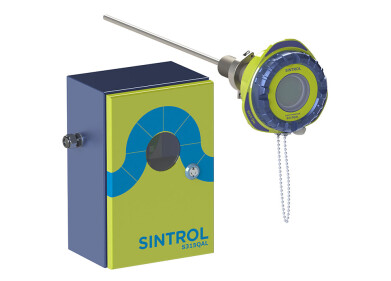Air monitoring
Carbon Dioxide Data Loggers Play Key Role in Monitoring Energy Efficiency
Nov 30 2012
Researchers at Oxford Brookes University have been using Tinytag carbon dioxide data loggers from Gemini Data Loggers (UK) as part of building performance evaluation and monitoring studies for both domestic and non-domestic, new build and refurbishment projects funded by government research councils. In a research project funded by the government and other bodies, the CO2 loggers have been used as a means of determining air quality in deep whole house retrofit projects.
Tinytag carbon dioxide data loggers are an accurate solution for monitoring CO2 levels in a wide range of buildings. Two of the discreet units are positioned in the living room and bedroom. The information recorded by the loggers is included with other environmental data, and the results are assessed to determine whether the overall energy system is working as intended.
For example, if the loggers show that CO2 levels are too high, it is an indication of poor air quality resulting from either poor maintenance or operation of mechanical ventilation systems. This type of result helps to detect problems in air quality and determine actual in-situ energy efficiency.
Rohini Cherian, Associate Researcher at the University commented, “We chose the Tinytags as they were one of the few solutions available that allows us to record CO2 levels over a period of time for later analysis. Their high memory capacity is an added advantage. It was also useful to have independent, non-intrusive CO2 loggers that were not tied to a wider system. The Tinytag Explorer software makes it very easy for us to interpret results.”
There is a growing awareness in the UK and throughout Europe of the need to monitor carbon dioxide levels within buildings to help determine indoor air quality, with recommended guidelines in place for specific premises such as schools. Areas with poor ventilation can lead to a build-up in carbon dioxide levels which can cause reduced concentration levels in occupants and in some cases can lead to health problems.
The CO2 logger uses a self-calibrating infrared sensor to determine carbon dioxide concentrations. To give high accuracy, the sensor compensates for the aging of the infrared source to ensure outstanding long term stability.
Data from the CO2 logger is downloaded to a PC via a USB connection and viewed using the easy to use Tinytag Explorer software, with data clearly presented as graphs and tables. Users are able to set a desired upper ppm (parts per million) concentration limit which will trigger a flashing red LED light if this level is reached. If required, data used together with that from Tinytag loggers monitoring other environmental parameters such as temperature and humidity, can help provide an integrated overview of building monitoring.
The CO2 logger is competitively priced: the standard unit is a 0-2000ppm version costing £350 (excl VAT) including mains adaptor, cable and software. This is suitable for most building monitoring applications. For more specialised situations a 0-5000ppm version is also available.
Digital Edition
AET Guide 2025
March 2025
Buyer's Guide Directory - Product Listings by Category - Suppliers Listings (A-Z) Air Monitoring - Stack Emissions Multi-Gas Analysis: OFCEAS<sup>®</sup> Technology Seduces the Market...
View all digital editions
Events
Mar 18 2025 Expo Santa Fe, Mexico
Mar 18 2025 Moscow, Russia
Mar 19 2025 Manila, Philippines
Mar 19 2025 New Delhi, India
Mar 20 2025 Guangzhou, China











.jpg)







